

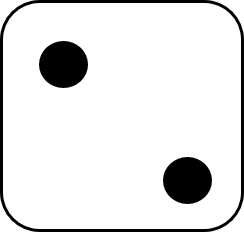
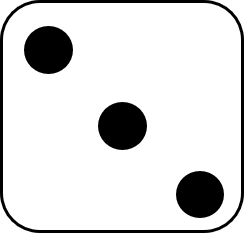
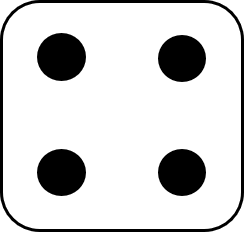
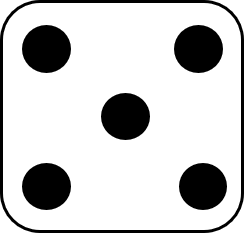
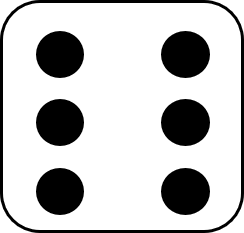
Ludo is a 2-4 player game. At the beginning of the game, each player's four tokens are out of play and staged in the player's yard (one of the large corner areas of the board in the player's colour). When able to, the players will enter their tokens one per time on their respective starting squares, and proceed to race them clockwise around the board along the game track. When reaching the square below his home column, a player continues by moving tokens up the column to the finishing square. The rolls of a single die control the swiftness of the tokens, and entry to the finishing square requires a precise roll from the player. The first to bring all their tokens to the finish wins the game.
Each player rolls the die; the highest roller begins the game. Players alternate turns in a clockwise
direction.
To enter a token into play from its yard to its starting square, a player must roll a 6.
If the player has no tokens yet in play and rolls other than a 6, the turn passes to the next player. Once a
player has one or more tokens in play, he selects a token and moves it forwards along the track the number of
squares indicated by the dice. Players must always move a token according to the dice value rolled. Passes are
not allowed; if no move is possible, the turn moves to the next player.
Players may not end their move on a square they already occupy. If the advance of a token ends on a square
occupied by an opponent's token, the opponent token is returned to its owner's yard. The returned token can be
reentered into play only when the owner rolls a 6.